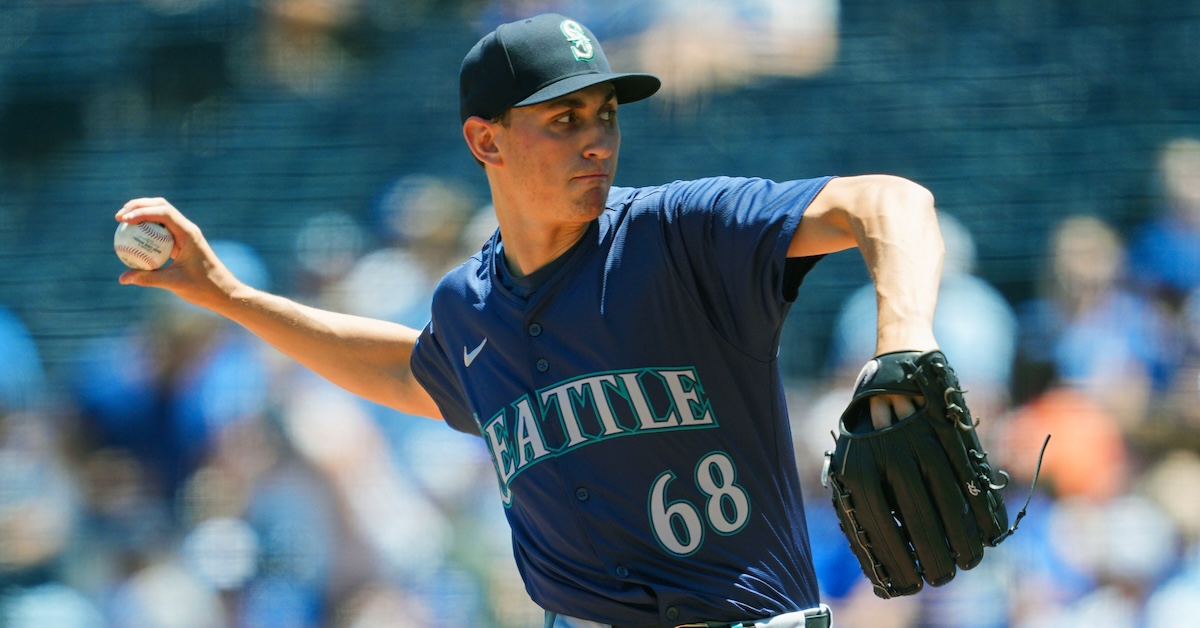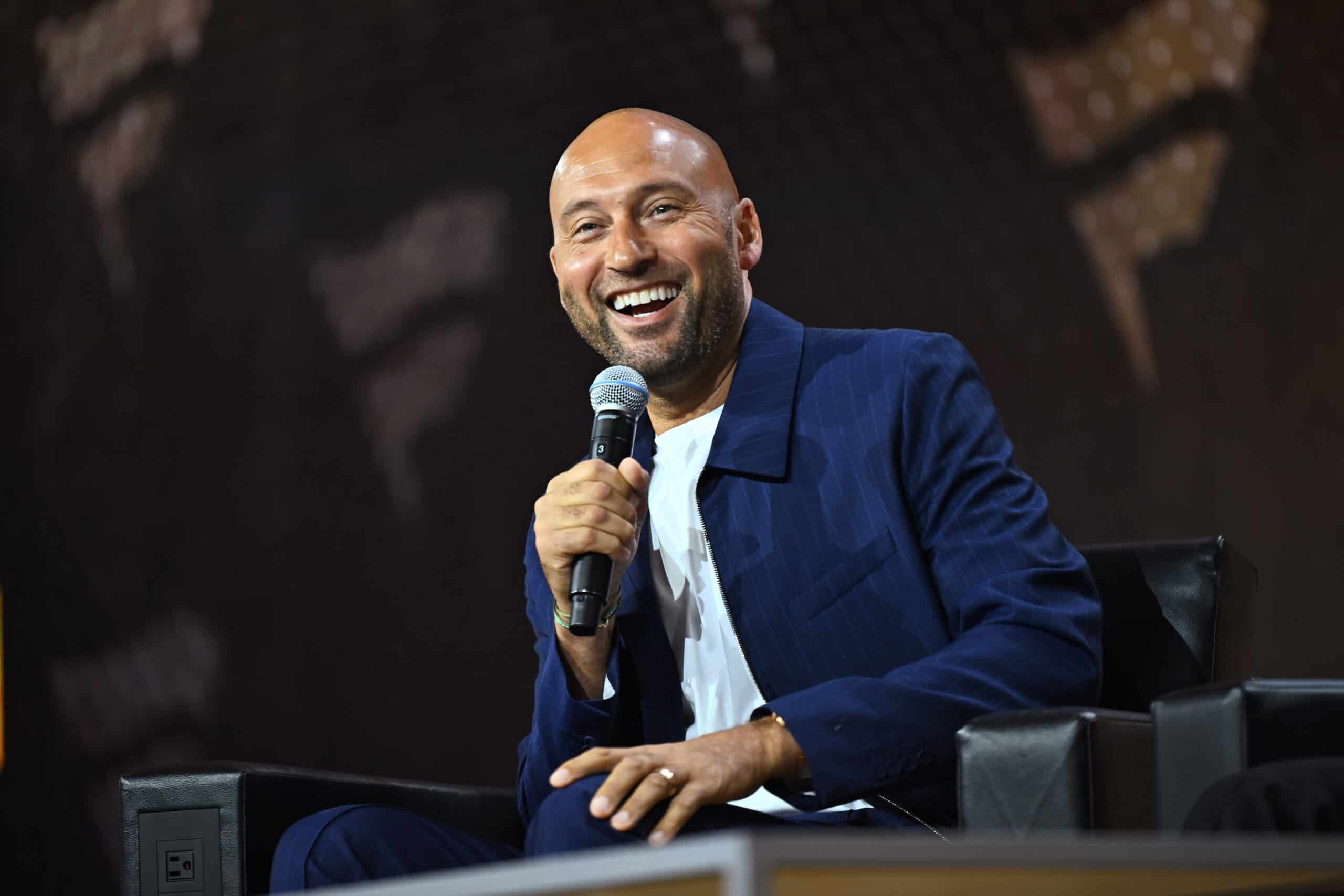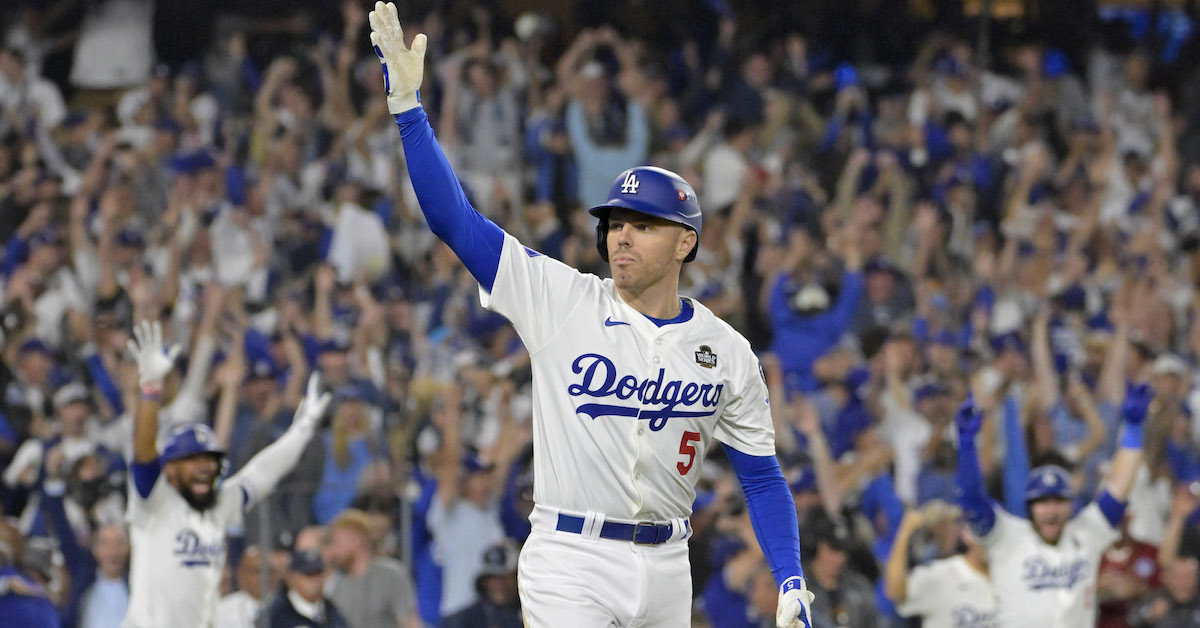[ad_1]
Jay Biggerstaff-USA TODAY Sports
George Kirby had Javier Báez right where he wanted him. It was October 3, 2022, the last start of Kirby’s excellent rookie year, and Kirby had Báez, the king of chasing sliders off the plate, in an 0-2 count. His catcher, Cal Raleigh, set up off the plate, suggesting that Kirby would be targeting the outer edge. Kirby hit his target with a well-executed slider. And Báez, instead of whiffing, hit it out of the park. Báez wasn’t fooled; at seemingly no point did he think that pitch was a fastball. And Kirby’s lack of deception — defined here as a lack of overlap between the horizontal release angle (HRA) of his fastball and slider — may have played a part.
My research shows that HRA similarity between fastballs and sliders explains a batter’s swing decisions at the pitch level. When a given slider matches the average (or expected) HRA of the pitcher’s fastball, it makes the hitter more likely to swing. If the slider is farther from the pitcher’s average fastball HRA, the hitter is more likely to take the pitch — even if it’s in the strike zone.
My findings track with an intuitive understanding of how these pitches interact with one another. If a slider is released from the same horizontal release angle as a fastball, the arm action between the two pitches will be identical and the initial flight of the pitch will pass through the same “tunnel.” The hitter, unable to initially tell the slider apart from the fastball, is more likely to pull the trigger on a swing. And the reverse is also true — a lack of deception in slider release angles makes a swing less likely.
The importance of the fastball and slider release angle interaction leads to two separate insights. One, it tells us something important about the reasons hitters decide to swing at sliders. The deception effect, in concert with the initial trajectory, explains more about a hitter’s swing decision on a slider than how much it’s moving or how fast it’s released. Second, it spotlights an interesting trade-off between release angle repeatability and deception, suggesting that there may be a secret cost to precise command.
Last month, I wrote about the Kirby Index, which captures how precisely a fastball can be located by a given pitcher. Now there is the Kirby Corollary: Too much precision can backfire.
… It’s maybe helpful to think about why Báez generally swings and misses at sliders. Is it because the pitch is going so fast he can’t tell it apart from a fastball? Is it because it’s moving so much that he can’t tell it’s a slider until the last minute? Or is this question infinitely complex, with a constantly changing set of answers? Most likely, it’s that last one. But my sense is that one key element is the idea of the “illusion of waste.” Alex Chamberlain coined the phrase “illusion of waste” in his article on release angles and Immediately Obvious Waste Pitches, or IOWPs, in April.

When a pitcher throws a pitch, the pitch reaches home plate in a fraction of a second. The opposing hitter, then, has a fraction of a fraction of a second to discern a great many things about the pitch: its velocity, its shape, its probable final location, all to then ascertain whether or not he should swing. Given the impossibly small window of time in which to make a swing decision, much of a hitter’s behavior is influenced by the untold thousands of pitches he’s seen before, like a mental library of pitch shapes. One of the very first visual cues a hitter receives, aside from the pitcher’s release point, is the angle at which a pitch leaves the pitcher’s hand.
What actually makes a slider good is a surprisingly difficult question to answer. For instance, we can look at Stuff+, which is modeled on explaining and predicting slider run value. Let’s see how it did at describing the stat it is trained against at the individual pitcher level in 2023:
It’s surprisingly uninformative! The r-squared between slider Stuff+ and slider run value was 0.08. There’s a lot we don’t know about why a slider works at any given point in time. As Max Bay, one of the creators of Stuff+, wrote on Twitter in response to this finding, “Turns out humans are not static stochastic response generating machines.” In other words, batters and pitchers are constantly responding to each other, and what made a hitter swing and miss on a slider last week might be completely different this week.

Identifying the specific factors that make a slider good over extended periods of time is tougher than it looks. Nevertheless, one of these factors, without question, relates to the ability of a pitcher to throw their slider in the same “tunnel” as their fastball. In 2017, Bret Sayre, Harry Pavlidis, Jonathan Judge, and Jeff Long of Baseball Prospectus coined the concept of the “tunnel point,” defined as the location roughly 24 feet in front of home plate where the batter must decide whether or not to swing. (Later, they updated the “tunnel point” to be roughly 150 milliseconds before reaching home plate.) Using the concept of a tunnel point, they generated a suite of statistics that measured tunneling quality among individual pitchers, including speed change and release differential between two pitches (like a fastball and a slider, for example) thrown in sequence.
[ad_2]



